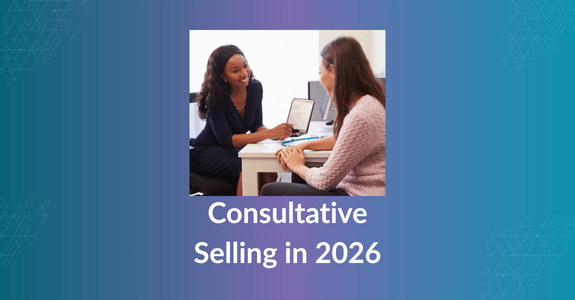Consultative Selling in 2026
by Mentor Group

This supporting article builds on our pillar piece, Top Sales Methodologies for 2026, to examine Consultative Selling in depth—what it is, where it excels, where it struggles, and the deal contexts where it is most effective.
Read the pillar article for full context.
What is Consultative Selling?
Consultative Selling is an advisory approach that centres the buyer’s context. Rather than pitching features, sellers co-create solutions with stakeholders to deliver measurable outcomes. The mindset is diagnostic and collaborative: uncover the truth of the problem, design the path to value, and guide the organisation through change.
Why it Matters in 2026 (Buyer-Led Context)
B2B buyers arrive better informed and further along in their decision process than ever. The winning motion is not to push, but to interpret signals, reduce friction across channels, and help stakeholders align on desired outcomes. Consultative Selling translates data, conversations, and business objectives into a confident path to value.
Core Principles
- Deep discovery and active listening
- Collaborative problem framing and outcome design
- Evidence-led recommendations (benchmarks, quantified business cases)
- Clear next steps via mutual action plans
- Trust, credibility, and value realisation post-purchase
Strengths
- Builds durable trust across multiple stakeholders
- Aligns solutions to measurable business outcomes (not feature lists)
- Reduces discount pressure by clarifying value and impact
- Adapts well to complex, enterprise deal cycles
Weaknesses / Risks
- Can be slow or unfocused without structured discovery
- Requires strong domain expertise and business acumen
- Risks ‘free consulting’ if access and next steps are not bounded
- Less suited to highly transactional, price-driven deals
Best-Fit Use Cases
- Complex, multi-stakeholder initiatives
- Transformation projects where change management is material
- Outcome- or value-based selling where design and proof matter
- High-regret purchases where trust is decisive
Where It Coexists with Other Methods
High-performing teams blend methods. Use MEDDIC to maintain qualification discipline, employ Challenger to reframe assumptions with credible insight, and use Consultative Selling to co-design outcomes and maintain stakeholder momentum. The craft is choosing the right tool for the right moment.
Implementation Checklist (2026)
- Instrument discovery with customer data (usage, intent, telemetry)
- Prepare role-specific, hypothesis-led discovery guides
- Bring benchmarked stories and quantified business cases
- Use mutual action plans and stage gates to prevent drift
- Track realised value post-sale to reinforce trust and renewals
Key Metrics
- Stage-to-stage conversion in complex deals
- Multi-threading depth and executive access
- Business case acceptance and realised value vs. plan
- Discount rate and sales cycle length for consultative motions
Frequently Asked Questions
Q1. When should I choose consultative selling over transactional selling?
A1. Choose consultative when risk, complexity, and stakeholder count are high; when outcomes must be defined and measured; and when change management is part of the purchase.
Q2. How do I keep consultative selling from becoming ‘free consulting’?
A2. Set mutual action plans, time-box discovery, and attach next steps to access (e.g., executive alignment or data needed to quantify value).
Q3. What skills matter most in 2026?
A3. Business acumen, structured discovery, data interpretation, stakeholder orchestration, confident facilitation, empathy, and credibility.
Q4. How does consultative selling align with Challenger?
A4. Use Challenger to reframe assumptions with credible insight; use consultative methods to co-create the path to value and maintain stakeholder momentum.
